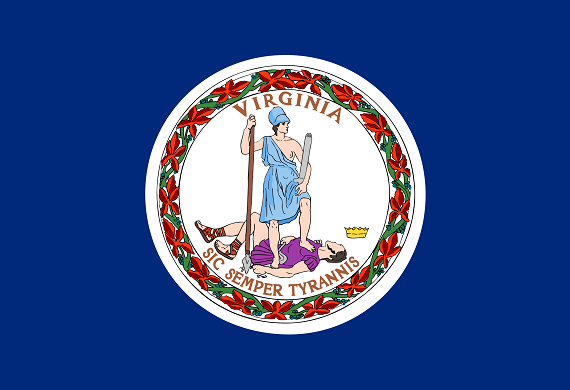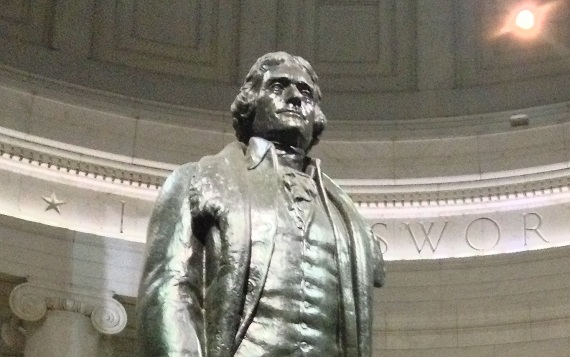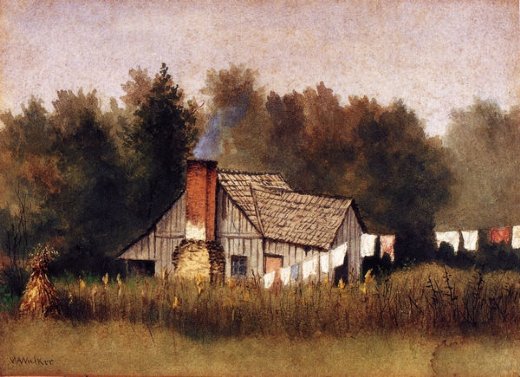This essay is the introduction to Mr. Kilpatrick’s The Sovereign States (Regnery, 1957).
AMONG the more melancholy aspects of the genteel world we live in is a slow decline in the enjoyment that men once found in the combat of ideas, free and unrestrained. Competition of any sort, indeed, seems to be regarded these days, in our schools and elsewhere, as somehow not in very good taste. Under the curious doctrines of the Fair Trade Act, vigorous salesmanship is “unfair,” and retailers are enjoined against discommoding their fellows. Mr. Stevenson’s criticism of the administration’s foreign policy, during the last presidential campaign, was not that the policies were so very wrong: They were not “bi-partisan.” With a few robust exceptions, our writers paint in pastels; our political scholars write a sort of ruffled-sleeve, harpsichord prose. We duel with soft pillows, or with buttoned foils; our ideas have lace on them; we are importuned to steer, with moderation, down the middle of the road.
These chamber music proprieties I acknowledge, simply to say, now, that the essay which follows should not be misunderstood. May it please the court, this is not a work of history; it is a work of advocacy. The intention is not primarily to inform, but to exhort. The aim is not to be objective; it is to be partisan.
I plead the cause of States’ rights.
My thesis is that our Union is a Union of States; that the meaning of this Union has been obscured, that its inherent value has been debased and all but lost.
I hold this truth to be self-evident: That government is least evil when it is closest to the people. I submit that when effective control of government moves away from the people, it becomes a greater evil, a greater restraint upon liberty.
My object is not to prove that the powers and functions of government have grown steadily more centralized, more remote from the people, for that proposition requires no proof; it requires only that one open one’s eyes. Rather, my intention is to plead that the process of consolidation first be halted, then reversed, toward the end that our Federal government may be strictly limited to its Constitutional functions and the States may again be encouraged to look after their own affairs, for good or ill.
A long time ago, the geometric mind of Edmund Pendleton offered a theorem. The State and Federal governments, he said, must follow the paths of parallel lines. Others have conceived the relationship in terms of spheres, separate but touching. The idea, when all this began, was that neither authority would encroach upon the other; and in the beginning, it was more feared that the States would usurp Federal powers than the other way around.
Now the rights and powers of the States are being obliterated. The encroachments of the Federal government have widened its road to a highway and narrowed the road of the States to a footpath. Having deceptively added a dimension to the Federal line, the “broad constructionists” declare their faithful adherence to the plans of the original draftsmen. Soon, a geometry unknown to Pendleton can proclaim the apparent miracle of parallels that meet this side of infinity.
I do not know that the sovereign powers of the States may be regained at all. Justice Salmon P. Chase once remarked, with great satisfaction, that State sovereignty died at Appomattox. But I do most earnestly believe that an effort must be made to regain these powers. The alternative is for American government to grow steadily more centralized, steadily more remote from the people, steadily more monolithic and despotic.
Only the States themselves can make the effort; which is to say, only the people of the States. Only if the citizens of Virginia, as Virginians; or of Texas, as Texans; or of Iowa, as lowans, insist upon a strict obedience to the spirit of the Tenth Amendment, can the Federal juggernaut be slowed. Only if the people evidence a determination once more to do for themselves can the essential vitality of a responsible and resourceful society be restored.
I do not despair. So long as the I-beams and rafters of the Constitution remain undisturbed, the ravages of Federal encroachment may be repaired. A latent yearning for personal liberty, an inherited resentment against the authoritarian state, a drowsing spirit of independence—these may yet be awakened.
But again, the States, as States, will have to do it.
It will not be easy. In many influential quarters, it will not be popular. It is a sweet narcotic that centralists sell.
Yet there is high example to be found in what the States have done before to preserve their identity. They have not always been spineless. In times past they have resisted, now successfully, now unsuccessfully; but even in their failures, something has been gained merely in the assertion of State convictions.
My purpose here is first to examine the bases of State sovereignty; then to follow the State and Federal relationship from its beginnings under the Articles of Confederation through its refinement in the Constitution; next to review some of the comment on the role the States were expected to play. The place of the States scarcely had been fixed, it will be submitted, before advocates of consolidation began to whittle it down—first in the Chisholm case, which led to the Eleventh Amendment, and more memorably in the Alien and Sedition Acts, which led to the “Doctrine of ’98” and the Kentucky and Virginia Resolutions of that year. It is proposed to follow this doctrine of the States’ “right to interpose,” in its various forms and applications down through the years, with particular emphasis upon the dangers of judicial encroachment and the need for State resistance against it. Finally, I have in mind to marshal some of the evidence which supports the case for the South in its immediate conflict with Federal authority, and to review other recent events that seem to me usurpations of the States’ reserved powers.
So much, then for the plan of this book. The political heirs of Alexander Hamilton and John Marshall will not care much for it.







